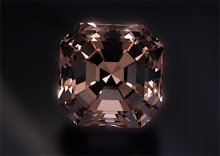Systematically, we worked through every man’s parcels, setting aside anything of interest and making offers as they waited. This worked sufficiently to our advantage as we ended up with some very nice facetable goods.

I must note though, that buyers are expected to take the parcel – or split it with someone in the group. Selecting just one piece of rough, which is usually the finest in the parcel, will escalate the price to be about the same as purchasing the whole parcel. So under this scenario, selection is futile.

Some of the items we were shown were: Chrome Tourmaline, Pink Spinel, a range of Garnets including Rhodolite, Almandite, Spessartite, variable colors in Grossular including some very fine Tsavorites, facetable Moonstone, several Ruby pieces and mixed colors of corundum from Winza and a new location that only opened up a few weeks ago. The name of the new location is not being verbally conveyed, but I believe the locals know of it.

Late in the morning, after we finished with the stream of local merchants, we were brought to the offices of Swala Gem Traders. They happen to be in the same building. Eric and Mark Saul are the owners. At this time, Eric was away in Europe, and so Mark was able to graciously take the time to share with us his inventory. Swala specializes in the Garnet family, but often has other species available. But today, we focused primarily on his fine selection of Rhodolites. We spent an hour or so working his parcels and came away with a nice selection. Mark is seated in the lower right in the photo.


 Our home for the next few days. Only served breakfast, but they washed our clothes and handled many small details for us, though it was a little 'rustic'. I'm sure if my wife came with me we'd be staying somewhere else!
Our home for the next few days. Only served breakfast, but they washed our clothes and handled many small details for us, though it was a little 'rustic'. I'm sure if my wife came with me we'd be staying somewhere else!




















 Here's Hubie workin' the sieve with a local miner. It was a messy business but we couldn't wait until it was finished to look over the gravels.
Here's Hubie workin' the sieve with a local miner. It was a messy business but we couldn't wait until it was finished to look over the gravels. 







 Sometimes there would be an impediment to our progress...
Sometimes there would be an impediment to our progress... We were just happy to have paved roads, since we already had an understanding what it would be like later on.
We were just happy to have paved roads, since we already had an understanding what it would be like later on.






